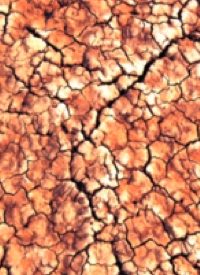
Man-made global warming is blamed for a myriad of environmental woes, from floods in Jakarta to drought in Australia, from record highs in Vietnam to snowfall in Baghdad. Global warming’s latest crime is allegedly increasing the amount of dust in the Earth’s atmosphere.
Robert Boyd with McClatchy Newspapers reports, "As global warming raises temperatures and forests are cleared for agriculture and other development, the amount of dust swirling through the Earth’s atmosphere is expected to grow. The likely impact is unknown." Boyd explains dust can be both good and bad for the environment. On one hand, it spreads harmful pollutants and microbes, which can cause or exacerbate heart and lung disease. On the other hand, it carries nutrients needed by marine plants that, in turn, break down carbon dioxide in the atmosphere. Additionally, dust has a cooling effect by reflecting heat from the sun. Boyd also quoted a researcher at the U.S. Geological Survey in Denver as crediting windblown dust from Africa as "critical in sustaining vegetation" in parts of North and Central America.
Despite the reported threat of increased atmospheric dust, scientists with the University of Wisconsin-Madison last March reported significant declines recently in airborne dust from Africa. Researchers blamed the lack of dust for 2005’s record-breaking string of hurricanes. Less dust translated to more sunlight heating up the ocean, creating ideal conditions for intense hurricanes to form. The study concluded that atmospheric dust and volcanic activity account for 70 percent of warming in the Atlantic Ocean for the past 26 years. The researchers recommended that climate scientists include these variables in climate models to more accurately predict changes in ocean temperatures.
This past fall, it seemed Australia was trying to make up for the lack of atmospheric dust from Africa. But scientists debating the cause of the huge dust storm that hit eastern Australia in September are not in agreement about link between the disaster and anthropogenic (human-caused) global warming (AGW). The New York Times quoted Andy Pitman, co-director of the Climate Change Research Center in Sydney, saying that record temperatures exacerbating dust storm conditions "cannot be explained without using global warming as a partial cause."
However, Gregory E. Webb with Queensland University of Technology in Brisbane, countered, "It seems to be very popular to attribute virtually any modern climatic phenomenon to ‘climate change,’ or more properly, ‘anthropogenic global warming.’ However, there is little scientific justification for attributing recent large dust storms in Australia to climate change that relates to human CO2 emissions." Webb pointed out that Australia is one of the driest continents on Earth and is accustomed to severe droughts and dust storms. He cited geological records proving Australia’s arid history and equated dust storms in the 1830s and early and mid 1900s with the American Dust Bowl of the 1930s, remarking that those could not have been due to AGW.
Dr. Anthony R. Lupo agrees. Lupo is a professor of atmospheric science at the University of Missouri, and his 2006 report Drought in the Midwest showed only a "modest correlation" between precipitation and temperature. Lupo’s research included tree-ring analysis in the United States back to the 1500s, demonstrating that "anywhere west of the Mississippi River, every fifty to seventy years we can expect an eight-to-ten year dry period" with "dust-bowl style droughts." Further evidence showed climate in the United States during the past 1,000 years has been wetter than the first 1,000 years A.D.
Lupo concluded, "I think in general we will continue to get wetter because the Gulf of Mexico is nearby and, as temperatures warm, that will pipe more moisture into the region. But alternating wet and dry spells will continue to occur, regardless of what climate does."




